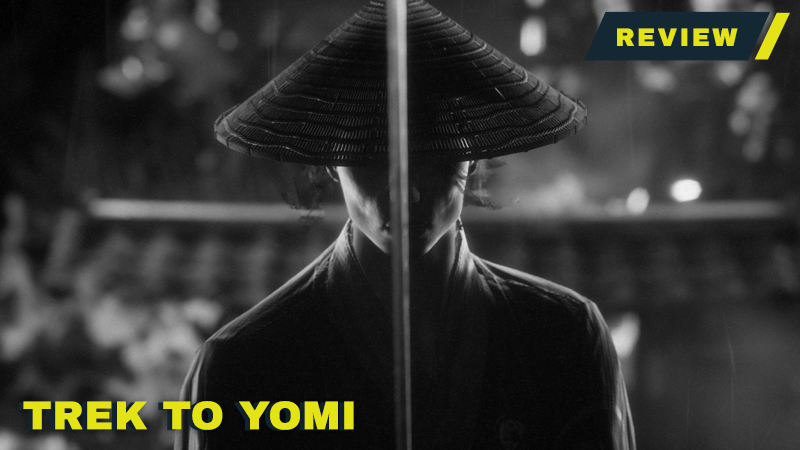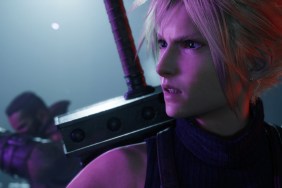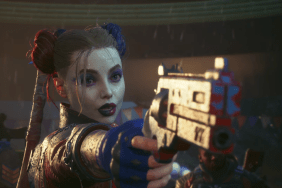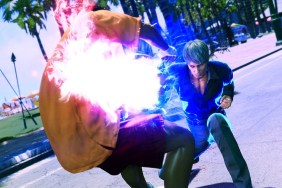Trek to Yomi marks a departure from the first-person shooters that Flying Wild Hog is known for, as it mostly stemmed from the mind of developer Leonard Menchiari. This 2.5D action game set in 19th century Japan has no wacky guns or loudmouth protagonists; only a somber tale about a warrior that has been influenced by samurai films from the 1950s and 1960s. While its lovingly crafted visuals pay homage to those influences before thoughtfully diverging from them, Trek to Yomi also creates some of its own problems during that journey.
Trek to Yomi’s style is striking from the title screen on because of how immediately and succinctly it conveys the tone it is going for. The black and white visuals, an exorbitant amount of film grain, and letterboxed perspective combined with the kanji and music all promptly tell the viewer to expect something akin to an Akira Kurosawa film.
These elements not only serve as effective shorthand but they are also utilized well and aren’t just used cheaply or thoughtlessly. Letterboxing in other games like The Evil Within and The Order: 1886 was a shallow gimmick that only seemed like it was there to squeeze more performance out of the hardware; a clumsy excuse that fooled no one, especially since it obscured the over-the-shoulder shooting in both instances.
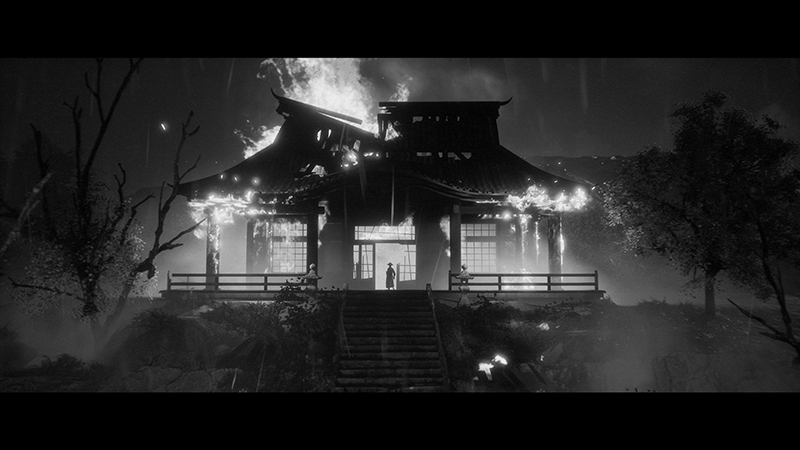
The difference is that Trek to Yomi works with that aspect ratio to frame its shots and create some truly outstanding compositions. Wider angles are often satisfyingly symmetrical or give light to awe-striking scenes that guide the player’s eyes toward the important bits like a big building in the distance. The fixed camera angle allows for this since it lets the developer author more impressive backdrops that also use lighting and motion to further funnel players along and only sometimes obstruct important bits of the environment. With a locked camera and tighter aspect ratio that knows how to frame its scenes, Trek to Yomi earns these cinematic touches in ways other games only use fruitlessly.
MORE: Ghost of Tsushima: Director’s Cut’s Iki Island is a Must-Play DLC in a Modest PS5 Upgrade
It also doesn’t just haphazardly use its black and white color palette. While a brilliant game in other ways, Ghost of Tsushima’s Kurosawa Mode was never more than a momentary distraction since the core game was built with a vibrant array of hues that were always going to be the focus during its creation. It was fitting since that open-world action game was gorgeous but meant that it couldn’t be built around that more limited set of colors.
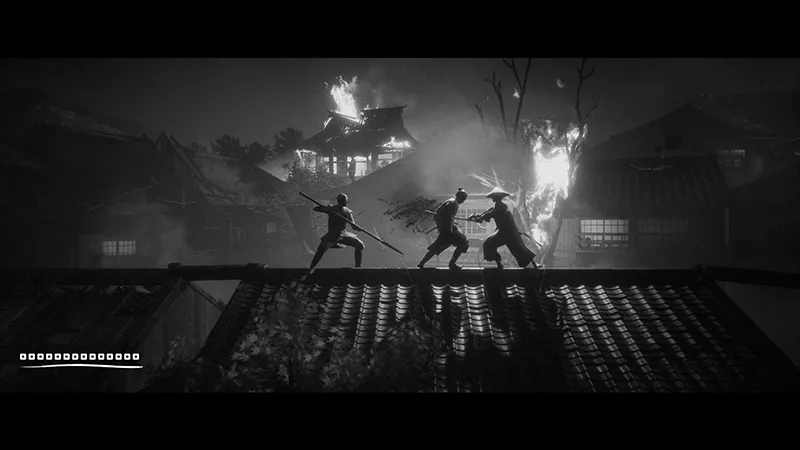
Trek to Yomi was constructed and lit with that in mind and succeeds because of that foresight. Shadows can appropriately hide or obscure characters, which the game uses to make the villain more menacing and to also add mystery to the protagonist, Hiroki. But its use of lighting is far more impressive.
Many of Trek to Yomi’s locales are on fire, which is a smart way to contrast the dark shadows through well-lit levels that are illuminated via natural light. It also uses these flames as a way to play with silhouettes that lead to visually engaging combat scenarios of rooftop duels that are backlit through moonlight or battles where the player is behind thin shoji walls. Fire has rarely been used as effectively, as it not only adds stakes and urgency to the narrative but also works with the unique visual style to create some memorable scenarios. It is occasionally too dark and some of the collectibles or items can be hard to see, yet the flair this approach brings to the game more than compensates for the shortcomings it yields, too.
RELATED: Exclusive Trek to Yomi Track Previews Samurai Game’s Soundtrack
The nods to Kurosawa also go far beyond being in black and white and its time period since Trek to Yomi utilizes the movement that the acclaimed director was known for. Kurosawa was a master of creating dynamic shots where the camera, characters, or weather were never static, which would either help wordlessly tell the story or keep audiences more absorbed.
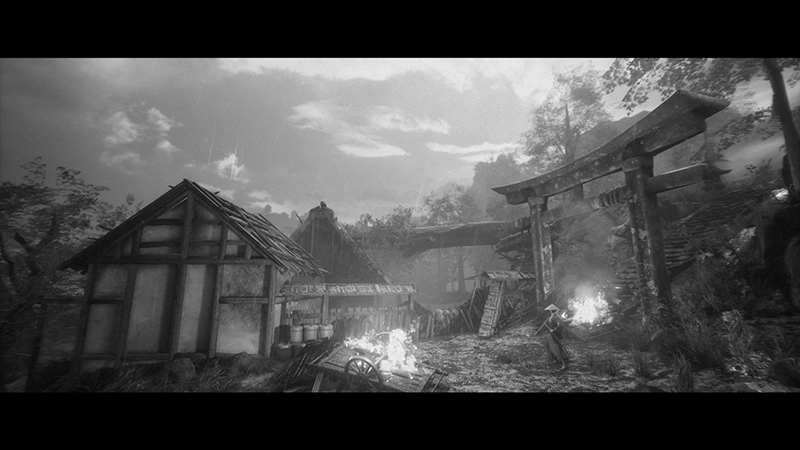
Trek to Yomi is similarly shot since there’s almost always something happening in the background or foreground. Soldiers might be running in the distance and can sometimes even hop into the play space to start a duel. Giant structures might crumble just feet ahead of the player. Innocent civilians are often running around, usually either watching in horror as their town burns or hopelessly trying to escape the invaders who lit the flames. This constant but never overwhelming barrage of subtle and grand movements ensure that the frame — and, by extension, the game — never stagnates.
This translates to how the camera moves, too. Even though it looks like a side-scroller, the camera will sometimes flip around behind Hiroki or go for a higher-up shot to show something grander. Many of these happen on an action, like hopping over a log or sliding down a ladder, which is another Kurosawa-esque touch. Trek to Yomi is already a tightly paced experience and it mostly gets its energy from its active shots and lively environments.
The actual narrative on top of these systems isn’t as compelling, although it still benefits from said systems. Hiroki’s journey starts out with familiar tropes of honor and defending his home from invaders, but takes a supernatural turn that deviates from that well-worn path. This turn is able to bring something new to the genre and also explore Hiroki’s guilt and regret in a more extravagant way that’s fully supported and augmented by the aforementioned cinematic techniques. Most of it goes by too quickly — a bad side effect of the brisk pacing — and not all of it makes sense, but the surreal take on classic samurai clichés combined with great performances means Trek to Yomi’s narrative can still withstand a few slashes to the gut.
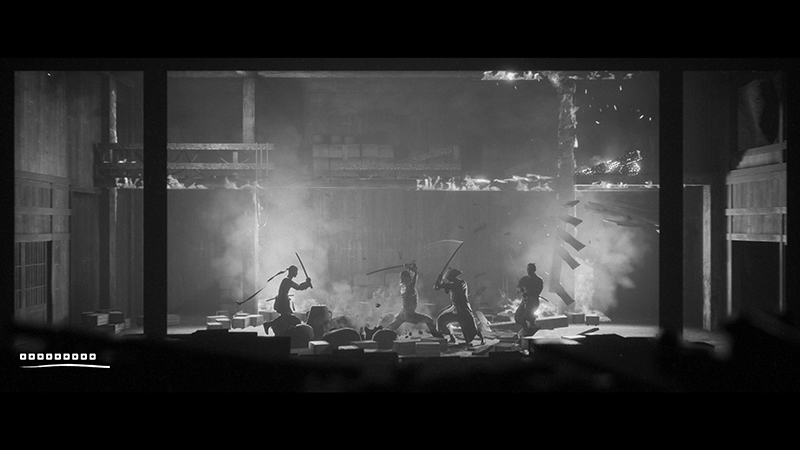
There are plenty of less metaphorical slashes to the gut in the game’s combat. Combat mostly stems from knowing when to block, strike, and dodge, as is the case with many sword-based games. At its best, fighting can be a bloody dance where players use their array of moves to deflect killing blows and quickly counter to slice their opponents to ribbons. Nevertheless, Trek to Yomi’s battles are rarely that satisfying because of an array of fundamental flaws.
The timing on the block can be a little awkward since it doesn’t happen quickly and because the game slows down when it’s time to parry, which is off-putting since it throws off its rhythm. It’s also impossible to switch sides while holding the block button and is a bizarre shortcoming that leads to a lot of cheap hits. Trek to Yomi also sometimes doesn’t respond to button inputs in and out of combat. Thankfully, plentiful checkpoints and instant loading make these problems less painful.
One of the biggest issues with its melee mechanics, however, is its lineup of overpowered offensive moves. At the very beginning of the second level, players get access to a simple three-button string that stuns just about every non-boss enemy in the game and also opens them up for an execution that grants health.
While that is already bad, the game gives players an even faster, easier combo with the same properties in the next stage. As long as the last swing hits, it’s a free kill that refills a big portion of the health bar. It’s so useful that it completely invalidates the need to use any other move and makes combat mindless and repetitive. The awkward hacking animations are just a cosmetic issue, while this is a fatal gameplay-oriented one that sadly kneecaps an otherwise decent, if flawed, combat system.
Trek to Yomi’s gameplay woes — as well as the stunning lack of a chapter select feature — drag the experience down and mean that its swordplay is not nearly as sharp as its presentation. Luckily, that presentation cuts deeply through the cinematic flair that it borrows from its inspirations, uses with purpose, and diverges from when necessary. The journey to Yomi is not an even one, but it sure is one worth taking.
SCORE: 7/10
As ComingSoon’s review policy explains, a score of 7 equates to “Good.” A successful piece of entertainment that is worth checking out, but it may not appeal to everyone.
